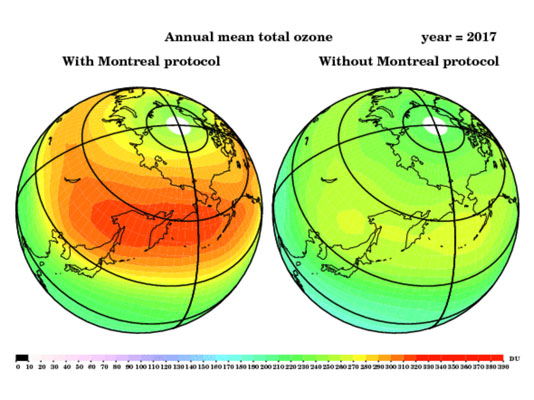Overview
One of the major anthropogenic influences on the atmosphere results from the release of ozone depleting substances (ODS). As a response to ozone depletion, the Montreal Protocol was established in 1987, which prohibited emissions of certain ODS into the atmosphere. The PMOD/WRC Climate Group studies the influence of the Montreal Protocol and other international assessments on ozone layer recovery and climate change.

